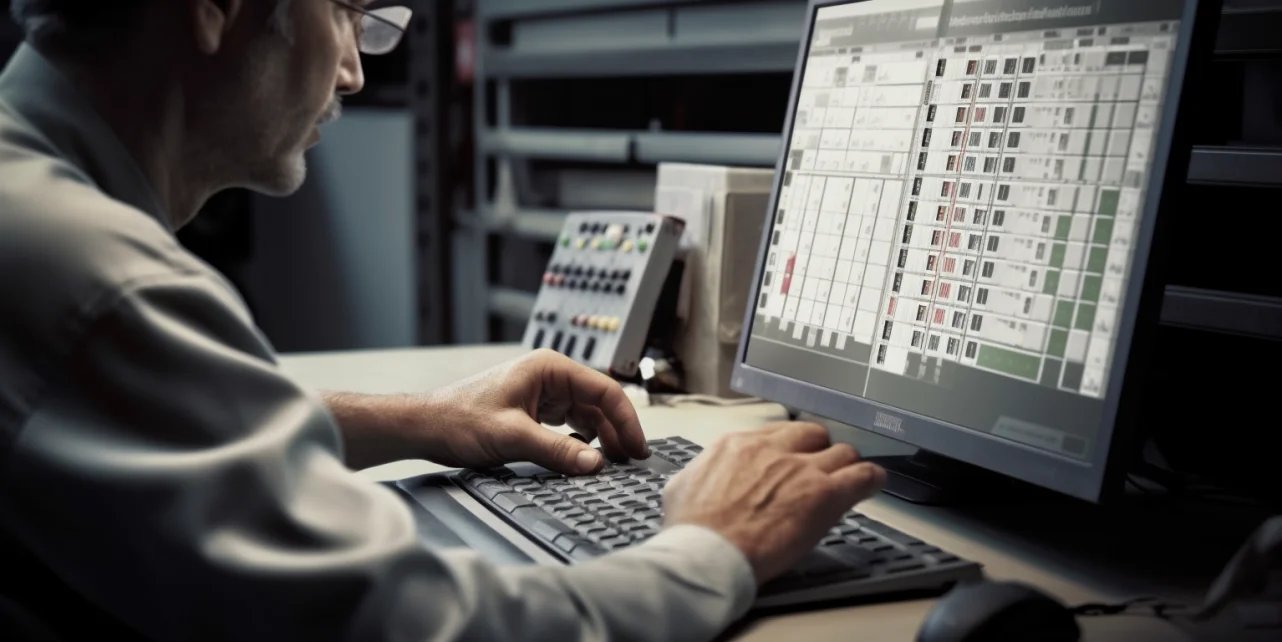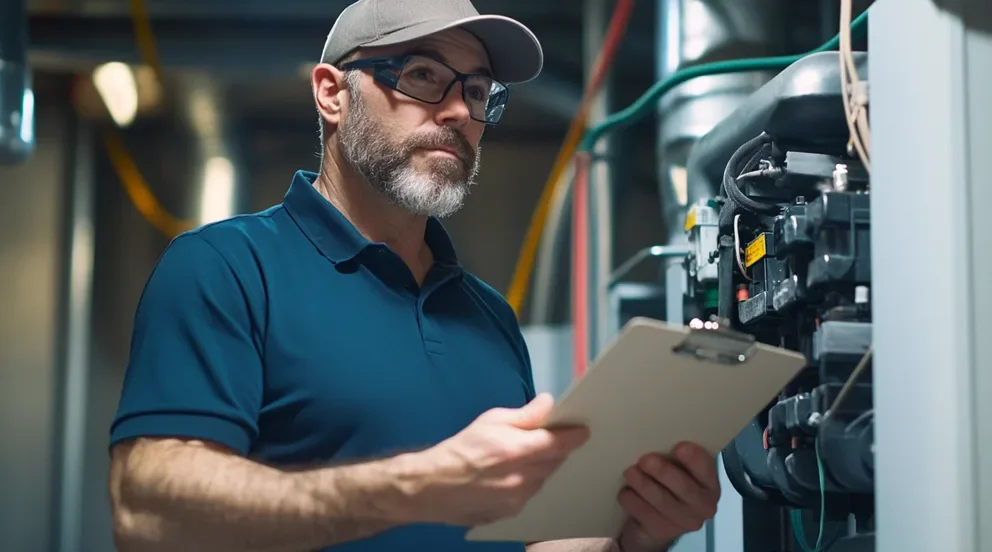Preventive maintenance scheduling can help to ensure that equipment, machines and facilities are in good working condition and do not break down unexpectedly. The purpose of preventive maintenance is to prevent minor issues from turning into major problems that could disrupt operations and result in downtime or costly repairs. By developing a preventive maintenance schedule, you can effectively plan out maintenance tasks and monitor the condition of equipment regularly.
The first step in developing a preventive maintenance schedule is to identify all the equipment, machines and facilities that require maintenance. This includes everything from simple tools to complex machines and systems. Once you have identified all the equipment, you should determine their maintenance needs, such as lubrication, cleaning, calibration, or replacement of parts. You can refer to manufacturers’ manuals, industry standards, or consult with maintenance staff to determine the appropriate maintenance tasks for each equipment.
After determining the maintenance tasks, you should then establish a frequency for each task. Some tasks may need to be performed daily, while others may only need to be done weekly or monthly. It is important to consider the usage and operating conditions of the equipment when determining the frequency of maintenance, as heavy usage or harsh environments may require more frequent maintenance.
Once you have established the maintenance tasks and their frequency, you can then create a schedule that outlines when each task should be performed. This schedule should also include the responsible party or maintenance staff, as well as any tools or equipment needed to complete the task. It is important to regularly review and update the schedule to ensure it is still relevant and effective.
By following a preventive maintenance schedule, you can prevent unexpected breakdowns and extend the lifespan of your equipment, ultimately saving time and money. Regular maintenance can also improve the reliability and efficiency of equipment, leading to increased productivity and reduced downtime. Therefore, maintaining a well-planned preventive maintenance schedule is essential for the smooth operation and longevity of your equipment and facilities.
Importance of Preventive Maintenance Scheduling
Preventive maintenance scheduling is crucial for the proper functioning and longevity of equipment, machines and facilities. Regular maintenance can prevent minor issues from turning into major problems, resulting in costly repairs and disruptions in operations. A well-planned preventive maintenance schedule can help to avoid these issues and ensure smooth and efficient operations.
One of the main benefits of preventive maintenance scheduling is the ability to plan and monitor maintenance tasks for all equipment. By identifying the maintenance needs and frequency for each piece of equipment, you can effectively prioritize tasks and allocate resources accordingly. This can also help to prevent overloading maintenance staff or neglecting certain equipment, ensuring that all equipment receives the necessary care.
Another advantage of preventive maintenance scheduling is the ability to save time and money. By regularly maintaining equipment, you can avoid unexpected breakdowns and reduce downtime. This can also extend the lifespan of equipment, ultimately saving on replacement or repair costs. Additionally, preventive maintenance can improve the reliability and efficiency of equipment, leading to increased productivity and decreased operating costs.
By following a preventive maintenance schedule, you can also ensure compliance with industry standards and regulations. Regular maintenance can help to meet safety requirements and ensure that equipment is in top condition, reducing the risk of accidents or injuries in the workplace.
Moreover, a well-maintained facility can create a positive image for your business. Properly functioning equipment and facilities can boost productivity, improve customer satisfaction, and attract potential clients or investors.
Steps to Develop an Effective Preventive Maintenance Schedule
Developing an effective preventive maintenance schedule can help to keep your equipment, machines and facilities in good working condition and prevent unexpected breakdowns. Firstly, it is important to identify all the equipment and determine their maintenance needs and frequency. This includes referring to manufacturers’ manuals, industry standards, or consulting with maintenance staff.
The next step is to establish a frequency for each maintenance task based on the usage and operating conditions of the equipment. This may range from daily, weekly, monthly, or even annually. It is important to consider the criticality of each equipment and prioritize accordingly.
This schedule should include the responsible party or maintenance staff, as well as any tools or equipment needed.
Regularly reviewing and updating the schedule is crucial for its effectiveness. This can be done by taking into account any changes in equipment usage or operating conditions, or feedback from the maintenance staff on the effectiveness of the schedule.
Finally, it is important to ensure that the preventive maintenance schedule is communicated to all relevant parties, such as maintenance staff, supervisors, and equipment operators. This will help to ensure that everyone is aware of their responsibilities and can work together to maintain the equipment and facilities properly.
Factors to Consider When Determining Maintenance Frequency
The frequency of maintenance tasks in a preventive maintenance schedule is an important factor to consider. There are various factors that can influence how often maintenance should be carried out on equipment, machines, and facilities. These include the criticality of the equipment, usage, operating conditions, and manufacturer recommendations.
The criticality of equipment refers to its importance in the overall operations of the business. Equipment that is essential for production or heavily relied upon should be maintained more frequently than equipment that is less critical.
The operating conditions of equipment also affect maintenance frequency. Equipment that operates in harsh environments, such as extreme temperatures or exposure to chemicals, may require more frequent maintenance to prevent wear and tear. Similarly, equipment that operates in a clean and controlled environment may need less frequent maintenance.
Manufacturer recommendations should also be taken into consideration when determining maintenance frequency. Manufacturers often provide guidelines for maintenance based on their expertise and knowledge of the equipment.
Key Components of a Well-Planned Preventive Maintenance Schedule
A well-planned preventive maintenance schedule consists of key components that are crucial for its effectiveness. These components ensure that all necessary tasks are identified, scheduled, and carried out efficiently to maintain the equipment and facilities in good working condition.
The first component is the identification of all equipment, machines, and facilities that require maintenance. This includes creating an inventory of items and their maintenance needs, consulting with maintenance staff, and referring to manufacturers’ manuals or industry standards.
The next component is determining the maintenance needs and frequency for each piece of equipment. This involves considering factors such as criticality, usage, operating conditions, and manufacturer recommendations to establish a suitable maintenance schedule.
This schedule should include the responsible party or maintenance staff, as well as any tools or equipment needed to complete the task. Regularly reviewing and updating the schedule is also crucial for its effectiveness.
Proper communication is another key component of a well-planned preventive maintenance schedule. This involves ensuring that all relevant parties, such as maintenance staff, supervisors, and equipment operators, are aware of their responsibilities and the schedule of maintenance tasks.
Finally, having a proper maintenance tracking system is vital for keeping the schedule organized and accessible at all times. This can include using software programs or spreadsheets to track completed maintenance tasks and identify any overdue tasks. By having all these key components in place, a well-planned preventive maintenance schedule can effectively ensure the proper maintenance and functionality of equipment and facilities.
The Impact of Following a Preventive Maintenance Schedule
Following a preventive maintenance schedule can have a significant impact on the overall operations and success of a business. By regularly maintaining equipment and facilities, businesses can avoid unexpected breakdowns, save time and money, and improve productivity and safety.
One of the main impacts of following a preventive maintenance schedule is the prevention of unexpected breakdowns.
This regular maintenance can also save businesses time and money. By avoiding unexpected breakdowns, there is less downtime and loss of productivity. Additionally, regular maintenance can extend the lifespan of equipment, reducing the need for costly replacements or repairs.
Following a preventive maintenance schedule can also improve productivity. Well-maintained equipment can operate more efficiently, leading to increased productivity and output. It can also lead to a safer working environment, as regular maintenance can identify and address potential safety hazards.
Moreover, by following a preventive maintenance schedule, businesses can comply with industry standards and regulations. Regular maintenance can ensure that equipment is in good working condition, meeting safety requirements and reducing the risk of accidents or injuries in the workplace.
Key Takeaways
1. Preventive maintenance scheduling is crucial for the proper functioning and longevity of equipment, machines, and facilities.
2. It involves identifying maintenance needs, establishing maintenance frequency, and creating a schedule for maintenance tasks.
3. A well-planned preventive maintenance schedule can save time and money by preventing unexpected breakdowns and extending the lifespan of equipment.
4. Maintenance frequency should be determined based on criticality, usage, operating conditions, and manufacturer recommendations.
5. Key components of a well-planned preventive maintenance schedule include identification of equipment, and determination of maintenance needs. As well as, scheduling, regular review and updating, proper communication, and maintenance tracking system.
6. Following a preventive maintenance schedule can have a significant impact on business operations, including prevention of breakdowns, cost savings, increased productivity, and compliance with standards and regulations.



